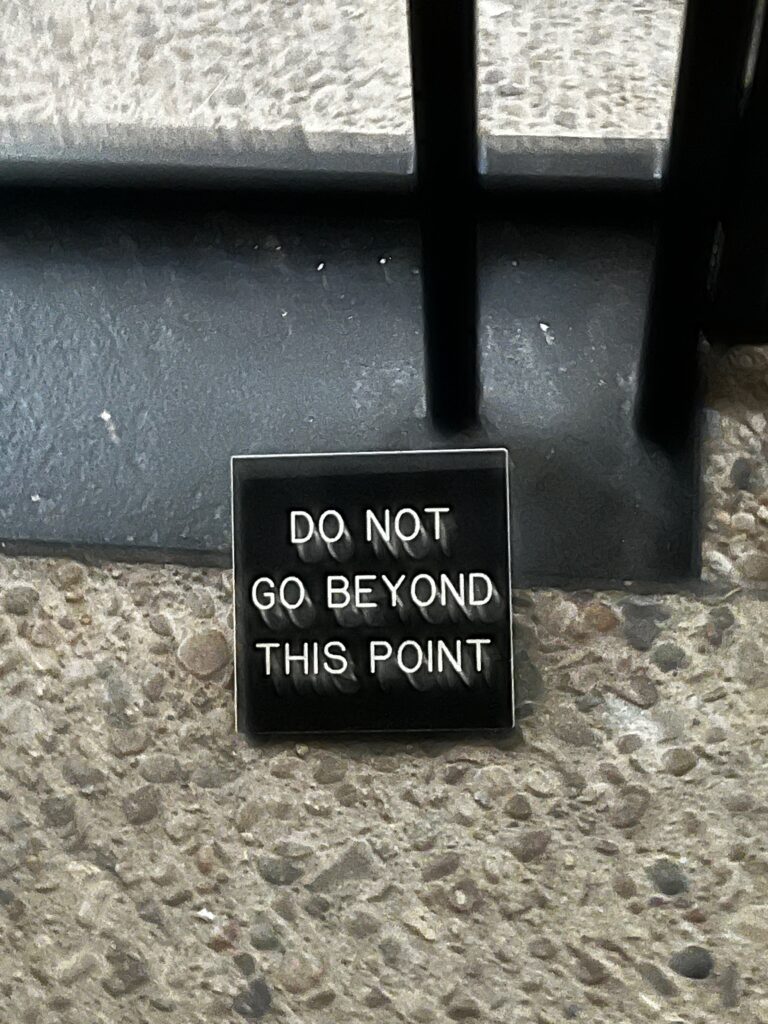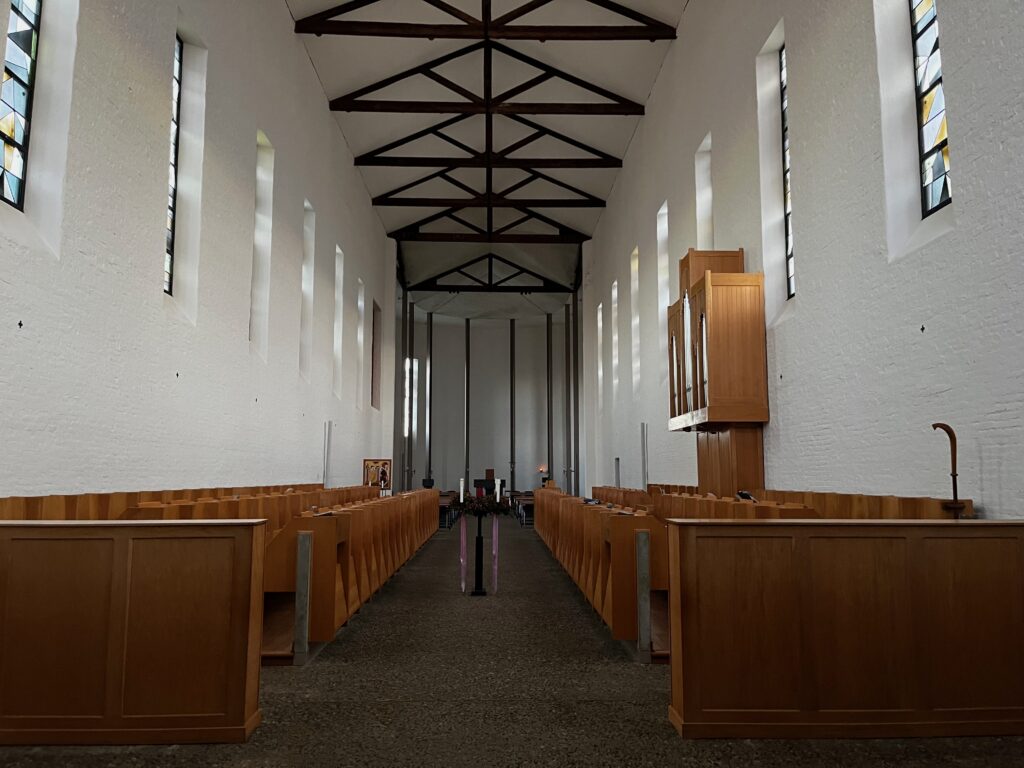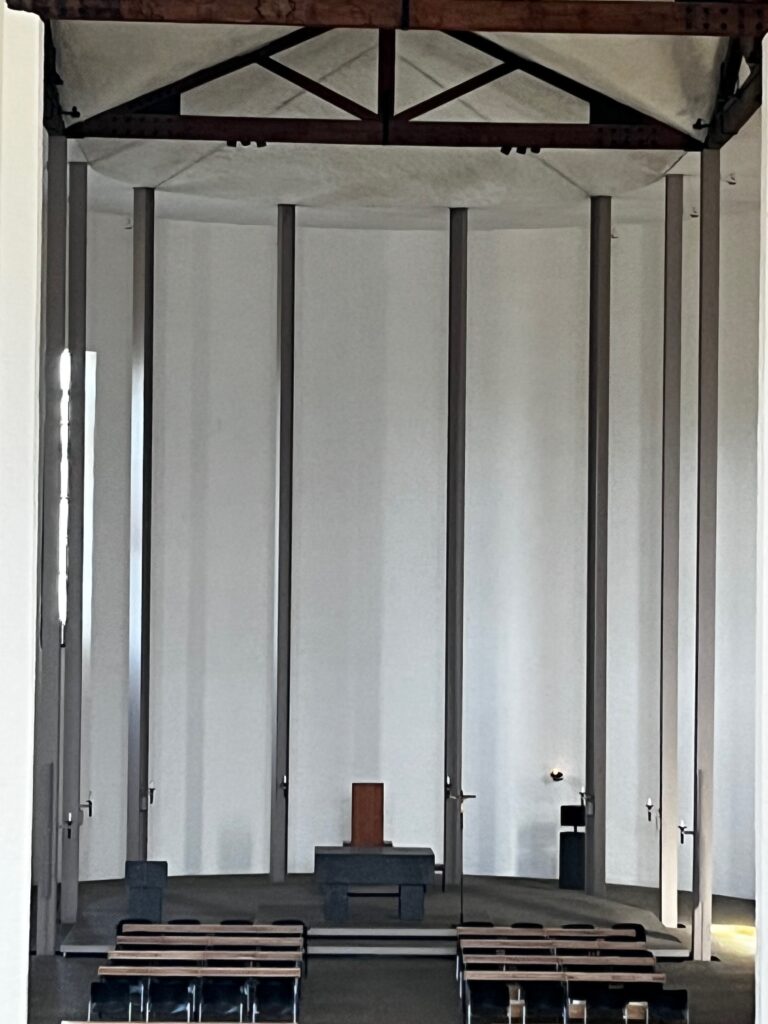Tuesday – First Full Day
Tuesday I have broken into two parts so they won’t be so long
I have friends who tell me the first day or two of a retreat they just sleep – letting their bodies and minds catch up with some solid rest. I find that difficult, even if I want to. I was certainly sleepy after supper and compline Monday night (compline was awkward, another thing that takes getting used to is the rythmn of how they pray here. Most everything is chanted at the prayer hours (7 of those a day).

The prayer hours
They start at 3:15am with Vigils (Vigils, or watching in the night, is prayer to be celebrated in the middle of the night during which we meditate on salvation history as it unfolded down through the ages. The office of Vigils consists of a hymn, psalms, readings (scriptural and patristic), and canticles suitable to the spirit of the midnight hour when one awaits the arrival of the Bridegroom (Mt 25:6; Mk 13:35). In monastic communities the concentration on vigilance begun with this office continues until lauds. Monastics spend this time enveloped in and supported by darkness and silence in lectio divina,prayer and meditation.)

Vigils is followed by Lauds at 5:45am (traditionally at dawn, but sunrise is later: Lauds is celebrated at daybreak when the sun is dispelling the night and the new day is born. The Church has always considered the sun to be a symbol of Christ rising from the dead. This prayer is called Lauds because it is a laudatory liturgy of praise in the early morning light.)
Eucharist (Mass) comes right after Lauds. We move from the closing prayer out of our “visitor seating” where we pray and observe the monks praying, separated by glass, into the beautiful altar space. We still are separated in our seating, but no longer by a glass wall.
Breakfast is at 7, followed by Terce at 7:30am (Terce, a Latin term for third hour, is prayed at mid-morning. It is a shorter prayer referred to as one of the little Hours. Traditionally it is dedicated to the coming of the Holy Spirit which took place at mid-morning in the account found in the Acts of the Apostles. One prays for light and strength as the day waxes strong and one’s work begins). Sext is at 12:15 pm (Sext, another of the little hours, is Latin for the sixth hour. It takes place at midday when the sun is at its apex and one has become a bit weary and mindfulness is all but impossible. It is a time for earnest prayer to resist temptation, to keep from being overcome by the demands and pressures of life. We are reminded of Christ being crucified at the sixth hour and we unite ourselves with Him), Sext is followed by lunch at 12:30.
None is at 2:15 pm (None, refers to the ninth hour, roughly mid-afternoon, and is the third of the little hours. It is a time to pray for perseverance, to pray for the strength to continue bearing fruit as one reaches one’s prime and needs to keep going. It is a time when one becomes aware of the sun’s gradual descent and the strength one needs to cope with the demands and responsibilities of life.).
Vespers are at 5:30pm (Vespers, celebrated at day’s end, takes on the character of evening. The day is almost over, our work is done.).
Supper is at 6:00pm and the monastic day ends with Compline at 7:30pm (Compline comes from the Latin which means to complete. It is the last common prayer before retiring for the night. It marks the completion of our day and heralds life’s end. It leads back into the darkness of the night, but a darkness different from that of vigils. It is not the darkness of waiting where all the possibilities of good and evil were still ahead. This is the darkness of God’s mysterious presence, the abyss of his mercy into which he let us fall. Compline may be understood as a daily exercise in the art of dying. For what is sleep if not a little rehearsal for death? But dying a death which will open the fullness of life and light. That is why the cantor sings the wonderful song of old Simeon on the threshold of death: “Now Lord, you will let your servant go in peace, according to your word, for my eyes have seen your saving deed which you have set before all: a light for revelation to the Gentiles, and for the glory to your people Israel.” (Luke 2:29-32).). The monastery’s version of Compline is quite different from what is in the Episcopal Book of Common Prayer, other than the same Psalms are used.

Thanks to [https://www.geneseeabbey.org/liturgy/description-of-divine-office/] for the above descriptions of the divine hours. While they are prayed at all monasteries, the idea, especially post Vatican II, was for all believers to also pray them. The offices of Morning and Evening Prayer in our Episcopal Book of Common Prayer (BCP) are basically combinations of the above prayer hours as a way to make them more practically available to laity. But the BCP adds some simpler, shorter prayer offices as well (for noon day and Daily Devotions for individuals and families. Our BCP is a gem we need to be made more aware of….stay tuned St. Simon’s!)
MORE ON DAY TWO COMING SOON
The darkest hour of the night is the hour before daybreak, where the affirmation is renewed everyday: darkness cannot overtake light.
I love the distinction between two kinds of darkness – one of waiting with the possibilities of good and evil laying ahead, and the other of God’s mysterious presence into which he lets us fall.
I’m interested in following you and your journey!
David you explained it perfectly!Thank you for sharing how to be a member of Jesus church and Faith.Looking forward forward to day three